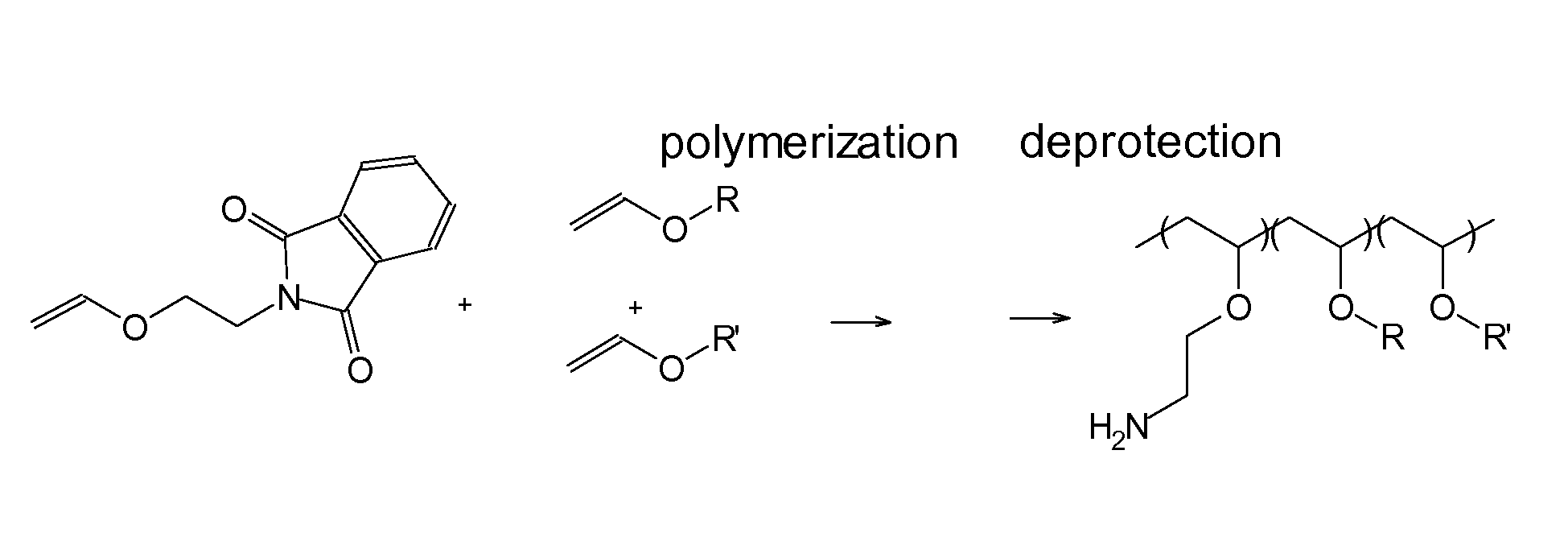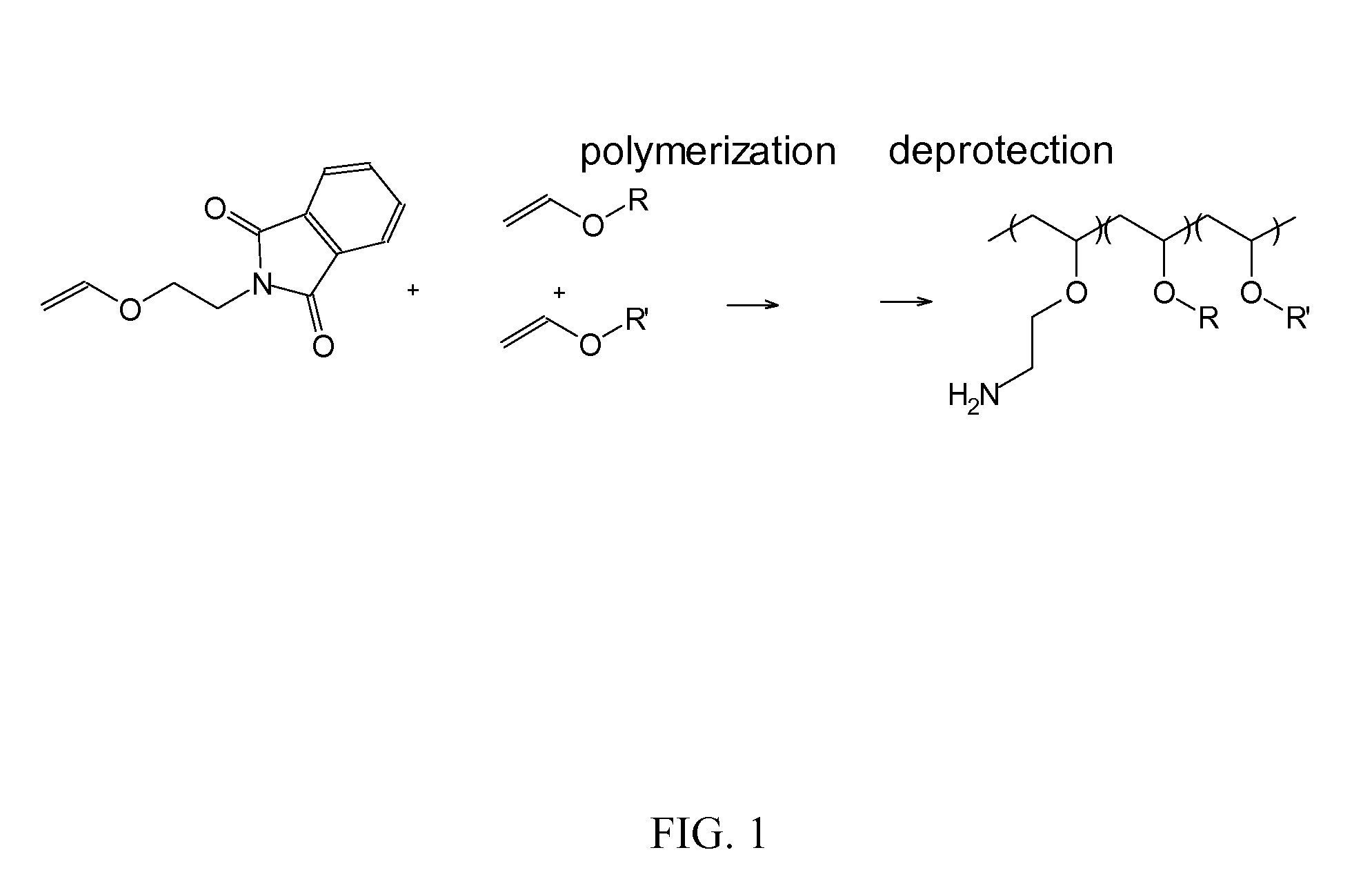Reversibly Masked Polymers
- Summary
- Abstract
- Description
- Claims
- Application Information
AI Technical Summary
Benefits of technology
Problems solved by technology
Method used
Image
Examples
example 1
Polynucleotide Synthesis and Assembly
[0168]The following synthetic RNA oligonucleotides (Dharmacon, Lafayette Colo.) were used. Sense strand RNAs contained a primary amine with a six carbon spacer at the 5′ to allow conjugation to the delivery vehicle. The 2′ACE protected RNA oligonucleotides were deprotected prior to the annealing step according to the manufacturer's instructions. The siRNAs had the following sequences:
apoB (Ensembl# ENSMUST00000037520);apoB-1 siRNAsenseSEQ ID 15′-NH4-GAAmUGmUGGGmUGGmCAAmCmUmUmUmA*G,,antisenseSEQ ID 25′-P-AmAAGUUGCCACCCACAUUCmA*G,;apoB-2 siRNAsenseSEQ ID 35′-NH4-GGAmCAmUGGGmUmUCCAAAmUmUAmC*G,,antisenseSEQ ID 45′-P-UmAAUUUGGAACCCAUGUCCmC*G,;ppara (GenBank# NM_011144);ppara-1 siRNA,senseSEQ ID 55′-NH4-mUmCAmCGGAGmCmUmCAmCAGAAmUmUmC*U-3′,,antisenseSEQ ID 65′-P-AmAUUCUGUGAGCUCCGUGAmC*U-3′,;ppara-2 siRNAsenseSEQ ID 75′-NH4-mUmCCCAAAGCmUCCmUmUmCAAAAmU*U-3′,,antisenseSEQ ID 85′-P-mUmUUUGAAGGAGCUUUGGGAmA*G-3′,;Control siRNA (GL-3 luciferase reporter gene),...
example 2
Poly(Vinyl Ether) Random Copolymers
[0170]A. Synthesis of a vinyl ether monomer. 2-Vinyloxy Ethyl Phthalimide was prepared via reacting 2-chloroethyl vinyl ether (25 g, 0.24 mol) and potassium phthalimide (25 g, 0.135 mol) in 100° C. DMF(75 ml) using tetra n-butyl ammonium bromide (0.5 g) as the phase transfer catalyst. This solution was heated for 6 h and then crashed out in water and filtered. This solid was then recrystallized twice from methanol to give white crystals.
B. Amine+lower alkyl poly(vinyl ether) polymers. A series of copolymers was synthesized from vinylether monomers with varying alkyl to amine group ratios and with alkyl groups having from one to four carbons (FIG. 1, R and R′ may be the same or different). Membrane activity was dependent on the size (alkyl chain length) and ratio of hydrophobic monomers (Wakefield 2005). Propyl and butyl-derived polymers were found to be membrane lytic using model liposomes while methyl and ethyl containing polymers were not. We ter...
example 3
Masking Agents
[0175]A. Synthesis of 2-propionic-3-methylmaleic anhydride (carboxydimethylmaleic anhydride or CDM). To a suspension of sodium hydride (0.58 g, 25 mmol) in 50 ml anhydrous tetrahydrofuran was added triethyl-2-phosphonopropionate (7.1 g, 30 mmol). After evolution of hydrogen gas had stopped, dimethyl-2-oxoglutarate (3.5 g, 20 mmol) in 10 ml anhydrous tetrahydrofuran was added and stirred for 30 min. Water, 10 ml, was then added and the tetrahydrofuran was removed by rotary evaporation. The resulting solid and water mixture was extracted with 3×50 ml ethyl ether. The ether extractions were combined, dried with magnesium sulfate, and concentrated to a light yellow oil. The oil was purified by silica gel chromatography elution with 2:1 ether:hexane to yield 4 g (82% yield) of pure triester. The 2-propionic-3-methylmaleic anhydride was then formed by dissolving of this triester into 50 ml of a 50 / 50 mixture of water and ethanol containing 4.5 g (5 equivalents) of potassium ...
PUM
| Property | Measurement | Unit |
|---|---|---|
| Solubility (mass) | aaaaa | aaaaa |
| Structure | aaaaa | aaaaa |
| Electric charge | aaaaa | aaaaa |
Abstract
Description
Claims
Application Information
 Login to View More
Login to View More - R&D
- Intellectual Property
- Life Sciences
- Materials
- Tech Scout
- Unparalleled Data Quality
- Higher Quality Content
- 60% Fewer Hallucinations
Browse by: Latest US Patents, China's latest patents, Technical Efficacy Thesaurus, Application Domain, Technology Topic, Popular Technical Reports.
© 2025 PatSnap. All rights reserved.Legal|Privacy policy|Modern Slavery Act Transparency Statement|Sitemap|About US| Contact US: help@patsnap.com



